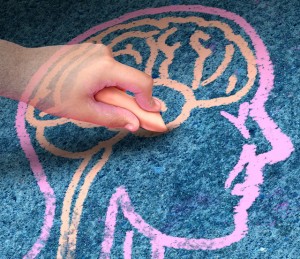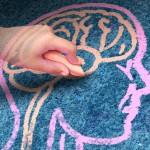How to Reprogram Your Mind

While we may never understand the brain in its entirety, neuroscience has begun to map it to the point where we can unravel many of its mysteries and turn its inner workings to our direct and conscious advantage. The brain, as part of nature, is governed by scientific laws whose themes can be seen reflected throughout the universe. Likewise, as is true of most entities in nature, the brain can restructure and heal itself.
In previous decades, science did not give the brain half enough credit in this area, and assumed that it was far more “static” than it is, unable to heal itself or adjust itself significantly after a certain age. This is actually quite false, giving new hope to those suffering from the lasting effects of trauma and mental illnesses.
This newfound ability of the brain, dubbed neuroplasticity, shows we all have an innate ability to restructure the gray matter of our brains with directed, conscious action, i.e., through what we think, say, and do. This reshapes our emotional responses on a molecular level, teaching them how to innately respond to the same situation when it arises again; in effect, changing how we feel about an event, our “felt experience” of an event, physically restructures the gray matter of our brains.
This allows psychologists today a more direct and effective way of treating even the most stubborn of behavioural problems, such as addictions, post-traumatic stress disorder (PTSD) and obsessive-compulsive disorder (OCD), by literally “re-wiring” the brain to respond in a more neurotypical way—more like a “normal” brain would respond to the same stimuli. When it comes to treating OCD, for example, neuroscientist Dr. Jeffrey Schwartz has crafted a four-step “response prevention” cognitive-biobehavioral treatment approach which aims to alter the body’s rigid fear-based response patterns.
These methods are not merely useful to those with OCD and other serious mental illnesses, however; most of us have problematic behaviours we would like to change, and the four steps outlined below can therefore help anyone seeking to regain mastery of his or her self: More…
brain reprogramming, change your mind, mind reprogramming, neuroplasticity, re-wire brain, re-wiring brain, reprogram your brain, reprogram your mind
Learn How To Alleviate Your Fears

Being anxious is not the worst thing in the world if it causes you to accomplish a given goal. On the other hand if the anxiety begins to take over your life, becoming unbearable, then it can seem overwhelming. Questioning every move you make and being afraid of the unknown can halt your progress. It can make you feel depressed or inadequate, and eventually it can interrupt the flow of your everyday life. The good news, though, is that with a little practice, that can all change. You actually have the ability to stop the torture by changing your thinking though exercise.
Continuous anxiety is burdensome, with the ups and downs causing havoc in your mind. It affects your sleeping and eating patterns, and even your relationships. It is nothing that you enjoy; yet you find it difficult to get off of the rollercoaster ride.
You might be obsessing over your anxiety, thinking that it will eventually steal your sanity or your strength. You may even trick yourself into believing that it’s a perpetual cycle, with no end in sight.
On the other hand you might think that your concerns help you to get things in order, to avoid pitfalls, and keep you one step ahead of disaster.
Whether or not you believe that anxiety is beneficial or detrimental to you, is equally harmful. If you are overly engaged in thinking about it, then you are stressing unnecessarily. Yet, if you don’t take it seriously enough, then you will continue the pattern of anxiety, which is also not good. Either way, the anxiety should be alleviated in order to restore healthy thinking. More…
Could Your Anxiety Be a Sign of ADHD?

A person suffering from Attention Deficit Hyperactivity Disorder (ADHD) displays behaviors of hyper-activity and inattention. It is common for hyper-activity to stem from anxiety and/or stress. Due to their limitations (e.g. poor memory and attention), many people with ADHD are under constant stress in their daily life, and when this stress builds up, it can trigger anxiety and depression that further complicates the situation and causes more hyper-active behaviour. ADHD is troubling enough on its own, but when paired with anxiety and depression, it becomes even more difficult to manage.
ADHD symptoms can often be masked by more prominent symptoms of anxiety and depression. Many experience laziness, trance-like states, panic attacks and suicidal thoughts. It is not uncommon for an individual with ADHD to be first diagnosed with an anxiety disorder such as a phobia, obsessive-compulsive disorder, or social anxiety. ADHD and anxiety go hand in hand: ADHD exacerbates anxiety symptoms and makes them more apparent, and anxiety amplifies existing ADHD symptoms. Due to poor memory and inattention, one might arrive late for work or an important appointment, or miss meetings or deadlines. The negative outcomes of these types of events can exacerbate already stressful situations and trigger more anxiety. Even the mere thought of failing at a task will give people with ADHD the jitters. More…
Neurodiversity: In Praise of Different Aptitudes

Human beings have an inherent tendency to favor the familiar; what is common is often automatically deemed to be beneficial and acceptable, whereas that which is atypical is likely to be judged as inferior, or at least somewhat suspect.
This rather reductive way of looking at the world has often been applied to our own brains, with terms like “deficit,” “disorder,” and “impairment” being attached to conditions like autism, dyslexia, and ADHD simply because these conditions do not always easily gel with the traditional learning model used in schools and certain social mores. There is a long list of unique traits that make people with autism look different. Yet, sometimes, autism (especially high-functioning autism) is not immediately noticeable and cannot be recognized without a professional assessment, which is typically a combination of social-emotional and psychoeducational assessment. These assessments target specific traits common for people with autism to establish a diagnosis. Yet, for those at the high end of the spectrum, the question remains – is being different really so bad?
In the late 1990s, however, an enterprising sociologist by the name of Judy Singer set about changing all that. Singer, who is herself on the autism spectrum, decided to coin a new term for these myriad conditions, one which properly acknowledges the fact that often those who have them are not only perfectly functional on their own terms, but in possession of various unique skills. Drawing on the positive connotation of terms like biodiversity and cultural diversity, she decided to label these conditions as being forms of “neurodiversity”.
Dealing with Social Anxiety Disorder

A teacher, Anna, is absent again today. In fact, she’s been on leave since she skipped her first lecture because she was afraid to introduce herself and speak to the class. Sara hates being the center of attention, and meeting new people and speaking in front of others are her worst nightmares.
Social anxiety disorder (SAD) is the most common type of anxiety disorder. It is more than just the occasional nervousness or shyness nearly everyone faces in social situations. SAD is described as an intense fear that causes distress and weakens a person’s ability to function normally in daily life. The sufferer can’t help feeling fearful and anxious, even when they consciously understand that such fears are unreasonable. People with SAD avoid social situations because they fear being watched, judged, and evaluated by others. They feel inferior to others, and they also fear becoming a laughingstock for being thought of as inferior. Such people are overwhelmed with negative thoughts, such as “People will judge my communication skills because I can’t speak well”, “I will look like a fool”, “They all think I am a looser” or “ I will make mistakes and they will laugh at me because I am not as good as they are.”
SAD is very prevalent in the United States. According to National Institute of Mental Health, as many as 15 million adult Americans have struggled with social anxiety disorder in their lifetime. The intensity of the disorder varies from person to person. While SAD causes some to avoid a wide range of social situations, others may only avoid specific situations in which they have to perform for others. More…
A Simple Technique to Control Negative Thoughts

The mind is an interesting device. It has what amounts to a non-physical component. At least it appears non-physical to us. That component is thoughts. That thoughts seem non-physical to the person doing the thinking is probably because the brain operates in a manner that can only be describe as a holographic. Thoughts may appear to be electrical impulses when measured, but to us they seem like ideas, hunches, inspirations and even words. Many, in fact most of us, think in words most of the time. This is because we are born with natural language ability and language is picked up early in childhood. As far as I know, there is no absolute rule that we must think in words. And when you think, words actually slow down the thinking process. It’s probably more accurate to say that our minds often think in symbols and words are just a certain type of symbol. For example, the word “god” means one thing and the word “dog”, the same letters in a different arrangement, means something else.
This is why repeating words over and over again can cause them to loose their meaning. They are, after all, only symbols. It is our minds that give meaning to these symbols.
When processing information automatically, our mind sometimes ignores the difference between a symbol and reality. Advertisers take advantage of this all the time. For example, the sexy woman lounging against the new car actually has nothing to do with it and doesn’t come as an option, and the guy wearing a lab coat and a stethoscope, who sells you cough syrup on TV, is an actor not a doctor. More…
The Quest for Emotionally Intelligent Computing

by Anna Kaminsky
Emotional Intelligence (EI) is the ability of an individual to understand, perceive and control their emotions. Emotional intelligence helps us understand ourselves and maintain relationships with others.
EI involves four basic steps – perceiving emotions, reasoning with emotions, understanding emotions and managing emotions. Consider a situation where you, upon meeting your friend, congratulate him about a promotion he received at work. In response, your friend just smiles. This emotional response might confuse you. To understand his emotions you need to differentiate whether it was a happy smile or a sarcastic one.
Most humans are able to perceive the difference between a happy smile and a sarcastic one, or between a true laugh and a forced laugh. Once the distinction is made, they should consider the emotion and decide on a proper response. Because perceived emotions can carry a variety of meanings, it is necessary to use contextual knowledge to filter out the unnecessary cues and signals that our brain is receiving. The forced laugh can be caused by person’s attitude toward you (typically, this is our first thought), or it might be a result of stress that the person is facing at home or at work. More…
Mood Tracking Apps for People with Bipolar Disorder

There are millions of people suffering for manic-depressive illnesses or how DSM-5 now classifies it “Affective (Mood) Disorders“. Most known of these is a Bipolar Disorder, and one of the key methods to managing the disorder is being able to keep track of an individual’s mood on a regular basis. Some people keep track of their daily or weekly emotional ups and downs by using a calendar. Others try to keep track of how they are doing in their heads. At the next visit to the therapist, one of the first questions the patient will be asked is ‘How have you been feeling since our last visit?’ An accurate report of a patient’s mental state is vital to determining medication changes or other alterations in therapy. Fortunately there is a very easy and accurate way for individuals to monitor and record their moods as they are happening. For little to no cost, mood tracking applications are available for your Apple or Android smartphone or tablet. A few of my favorites are T2 Mood Tracker developed by the National Center for Telehealth and Technology, Moody Me co-created by MedHelp and MoodTrack.com Private Diary developed by Matthew Windwer.
The T2 Mood Tracker application was originally created as a tool for members of the military to record and monitor their behavior changes, especially after returning home from combat deployments. However it is being used by service members and civilians alike because of the descriptive way the application allows users to record a particular mood in detail. For example, if a person is feeling ‘depressed’, they can further examine that feeling and record the levels of additional emotions related to the depression. A person may be feeling depressed, but it could be related to feeling lonely, tired, hopeless or unsafe. The app comes with six main emotional categories, each with ten sub-categories that can be rated on a sliding scale. New categories and related scales can be added by the user. In addition, custom reports using a specified start and end date can be created using any or all categories. More…
Difference in ADHD symptoms – Boys vs. Girls

Bryan is a fourth grader in a regular public school. According to his teachers, he is bright and easily understands the material. He tends to squirm incessantly and has a very short attention span. He rushes through assignments and class work without double-checking, ignoring the insistence of his teachers and parents. He wishes that he was as fast at schoolwork as the rest of his peers, but he usually ‘runs out of gas’. More often than not, he is impulsive and as a result, is frequently involved in fights. Ryan has been diagnosed with ADHD since Kindergarten. ADHD – Attention Deficit Hyperactivity Disorder is a psychiatric disorder involving problems with attention, hyperactivity and impulsivity. This disorder is commonly diagnosed in children but can continue to adulthood.
One way to increase our understanding of the illness is to examine the genders individually. Boys are 3 times more likely to be diagnosed with ADHD. However, it is unclear whether the illness is more common in boys or diagnosed more easily in them. For girls, behaviours indicating ADHD may be different. ADHD in girls is characterized by forgetfulness, distraction, disorganization, and poor concentration and attention. In my opinion, girls are under-treated and under-identified.
ADHD may manifest in two forms within individuals, sometimes both are combined together. It is important to note that these behaviours need to be carried out in more than one setting for them to be classified as ADHD. More…
Review of Tablet Apps That Help Children with Dyslexia

There are many ways that tablets can help children learn, but what about children with dyslexia? Would the tablet help them learn to read better? Here are some of the many ways that tablets can not only help students learn at the same pace as a normal student, but have learn better ways to cope with the challenges that they will face throughout their entire lives.
What is Dyslexia?
Thanks to the media, the most popular learning disability today is Attention Deficit Hyperactivity Disorder and every school teacher thinks that they can diagnose the disorder and recognize ADHD symptoms in children. Dyslexia is certainly less known but it is also very common. Dyslexia is much milder learning disorder that prevents a child from reading. It is important to remember that children that have dyslexia rarely experience mental retardation. Many children will have problems with orthographic coding, processing speed, language skills, verbal comprehension, phonological awareness, and auditory short-term memory.
Dyslexia is one of the most common reading disorders. Many of the children that suffer from dyslexia also suffer from another learning disability, making it even more difficult for the child to learn. Children that have dyslexia will have difficulties coming up with rhymes on their own. They will have problem with spelling, guessing words, adding letters to words, omitting letters from words, summarizing stories, reading out loud, and counting the syllables in a word. Parents should spend time understanding specifics of children with learning disabilities and learn how to select the best learning strategies for their children. More…
Can Computer Games Help Combat ADD and ADHD?

In most cases, video games are seen in a negative light by many when it comes to the length of time kids spend playing these games. However, in some cases, certain computer games can actually help lessen the severity of ADD and ADHD in kids. Parents, doctors, psychologists, and educators have a selection of new games that are now available that that can be used to help children and adults learn to resist their ADD and ADHD tendencies and pay better attention.
The games work to strengthen the connections within the brain and to help individuals learn stay focused and avoid distractions as they work through the tasks presented to them. Using this technique to develop an individual’s concentration is far from something new. Therapists have utilized various technologies to help improve learning, memory, focus, and concentration for many years.
Some of these games originated with big name companies and institutions such as National Aeronautics and Space Administration (NASA). They used these systems and new technology in order to record and observe the brain waves of their people as they worked in the flight modules and simulators. Nowadays, experts are discovering new ways that computer programs can help train the mind, and companies are producing software that is tailored and specially set up for home users. More…
An unorthodox intro to my psychology blog

Like a poor dancer, from time to time I end up stepping on someone’s toes. Seldom intentionally it just seems that I will say or do something that turns out to ruffle someone’s feathers. Although I maintain several excuses for my behavior, rarely do I really have a reasonable defense for my actions. This may well be one of those times.
The Medical Model
I decided to start this blog with a post on main concepts of psychotherapy. In looking at this subject t is important to keep in mind that therapy is based on what is known as the medical model. Under its very broad umbrella falls several categories of helping or caring professionals whose responsibilities include:
- Physicians, psychiatrists, and other medical professionals
- Mental/behavioral health therapists
- Specialists whose focus are specific areas of the human condition.
Whether treated in a medical office, a mental health center, or by a private therapist they all share in common the principles of the Hippocratic Oath., including:
- I will do no harm
- I will do my best in practicing my craft
- I will hold in the highest respect the nature of my treatment of my patients





